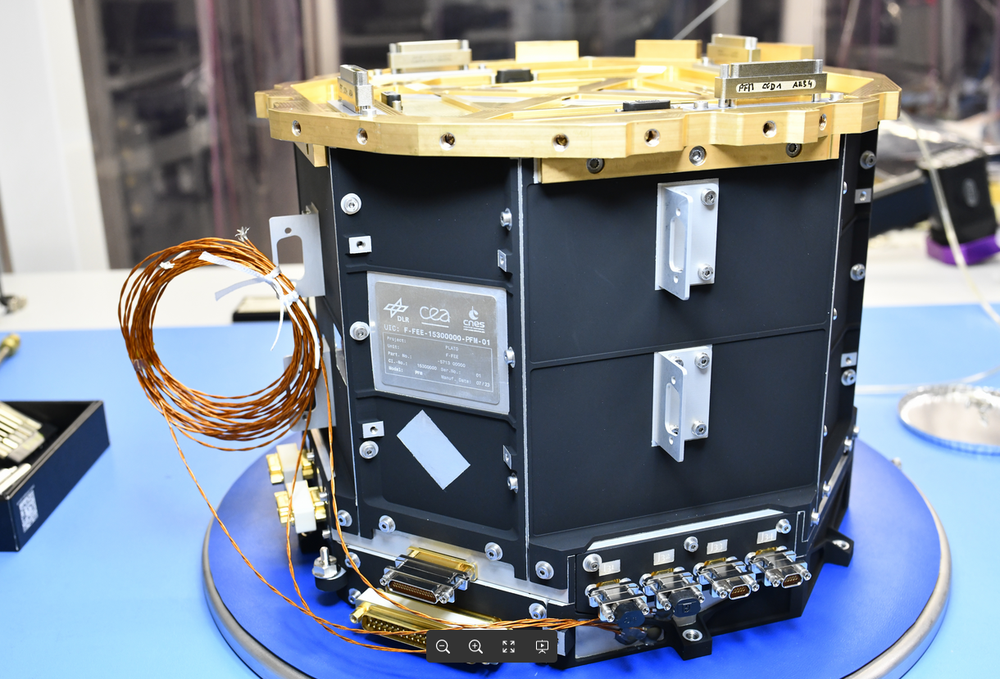Flight Model of the Readout Electronics for PLATO's Fast Cameras

The PLATO mission - short for PLAnetary Transits and Oscillations of Stars - will be launched at the end of 2026. The mission's declared goal is to find Earth-sized planets around bright stars, to characterise them precisely - radius, mass and age - and to identify those planets among the finds that are in the habitable zone. No wonder that more and more hardware, optical and electronic components are now being finalised and can be seen going into space in around two years' time.
The PLATO instrument is not a single telescope with a large primary mirror, but consists of 26 individual cameras, each equipped with four large-format CCD sensors.
Cameras with different tasks
The optical elements are identical in all cameras, but the detectors in the focal plane are read out at different speeds. There are two ‘fast’ cameras, which read out the CCDs every 2.5 seconds, and there are 24 ‘normal’ cameras with a cycle of 25 seconds. The information from the ‘fast’ cameras is needed to precisely align and track the satellite. The ‘normal’ cameras are the workhorses that provide data for the light curves in which planets can be found.
‘Fast’ cameras for precise alignment of the satellite
The extremely sophisticated readout electronics and the data processing electronics for the fast cameras, which also calculate the exact orientation of the satellite, were developed at the two DLR space institutes in Berlin, the Institute of Planetary Research and the Institute of Optical Sensor Systems, and made ready for the mission. There is another special feature of the fast cameras: they are equipped with a blue or red filter. This makes it possible to record transit events in the shorter blue and longer red wavelengths. Differences in the transit signals in the wavelengths can provide information about the surface or a possible atmosphere of the observed exoplanets.
